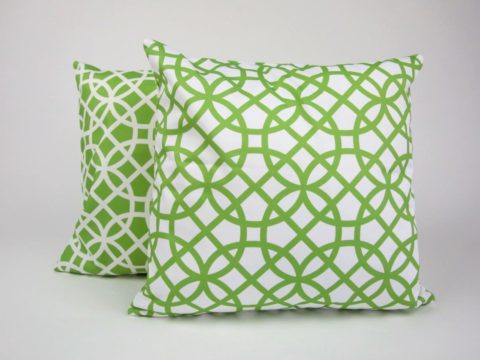Anne of Denmark: Life Story
Chapter 12 : Family Matters
By the autumn of 1604, Anne was again pregnant and there was much excitement at court at the prospect of a royal child – the first who would be born to a royal couple since 1537 (ignoring the preparations made for Mary I’s phantom pregnancy of 1555). There was a good deal of scurrying about by the household officers to find records of the customs and rituals that the queen should undertake. Princess Mary was born in April 1605, and named for her paternal grandmother, Mary, Queen of Scots. She was christened at Greenwich, with the Lady Arbella standing as godmother and her uncle, Ulrich of Holstein as godfather. Princess Mary died at the age of two, and Anne’s last child, Sophia, born in June 1606, survived only for a day.
Following the sadness of Sophie’s death, Anne had the pleasure of seeing her other brother. King Christian IV arrived at the English court in July 1606. Anne was still confined to bed, but James took his brother-in-law to the fabulous palace of Theobalds, Cecil’s home. Without Anne and her ladies present to bring a little decorum, the visit became notorious for the excessive drinking of both kings, and most of the guests. The performance of a masque was ruined when the Queen of Sheba was so drunk she fell into Christian’s lap.
Anne was churched and back into public life by mid-August. Together with James, Henry and Christian, she travelled down the Thames to Chatham for a banquet on the ‘Elizabeth’, one of the largest ships in the fleet. The next day, she was entertained by Christian in the Danish flagship.
Over the following years, other dignitaries visited the court – the Prince of Joinville, the Prince of Moldavia, and even representatives of the court of Ottoman Emperor. They were all lavishly entertained.
Theobalds was such a sumptuous place, that Anne fell in love with it, and ‘persuaded’ Cecil, now Earl of Salisbury, to exchange it with her palace of Hatfield. Reluctantly or not, the Earl agreed, and Anne took ownership in May 1607, with another masque written by Ben Johnson to celebrate her possession. Salisbury and Anne were on good terms – although he sometimes hinted that she was too extravagant – the bills for her refashioning of Somerset House, her own London home were high, and the costs of the New Year masques staggering. Having cut his teeth flattering Queen Elizabeth, Anne was easy to get round, and he gave her an extravagant green velvet bed and hangings as a New Year gift in 1608.
It was sometime around 1607 that Anne and James seem to have stopped co-habiting. Whether this was the cause or effect of their relationship beginning to weaken is impossible to tell, but it was at this time that James first began to take a serious interest in a young man by the name of Robert Carr (or Kerr, as the Scottish spelling was).
In his youth, James had been considered to be too fond of his cousin, Esmé Stuart, Duke of Lennox, and there had been hints that he was homosexual. From the time of his marriage to Anne, however, he was a devoted husband, and Anne’s record of ten pregnancies suggests a healthy sex life. James also castigated ‘sodomy’ as a heinous sin, deserving of death – although Anne Somerset in her book ‘Unnatural Murder’ makes the case that James might have intended the word to refer to the wickedness of molesting a child. Whatever the intimate details of the relationship were, his affection for Carr seemed to be more than just friendship.
Anne could not bear Carr and jealousy of him and ongoing grief at the loss of her daughters might have been part of the cause for her melancholy during the winter of 1609. James asked her why she was unhappy, and finding that she was in debt, gave her an additional £3,000 per annum, as well as paying off £20,000 of outstanding debt. No matter how infatuated he might have been with Carr, James still cared deeply for Anne. But matters deteriorated.
Carr, now Lord Rochester, together with his friend, Sir Thomas Overbury, failed to give Anne the respect which she was due. According to a French diplomat, Anne was treated with ‘insupportable contempt’ and intervened in matters of patronage to the detriment of the Queen’s plans. On a particular occasion in May 1611, James was forced to make a choice. Anne believed that Overbury and Rochester had insulted her, either by laughing at her, or failing to remove their hats in her presence and she went to James in a furious temper.
She fell at his feet, begging him ‘not to suffer her to be so scorned and despised of his grooms, though she were content to suffer it from him.’ If she were not treated with the honour due to her, she would return to Denmark. Anne and James had had quarrels before, but this was serious. James was upset, and wailed to Rochester ‘Ah, woe is me, my Queen will go from me.’ He then pleaded with her to accept that it was a misunderstanding, but to no avail. Anne requested Prince Henry to speak to his father, to make it clear that he supported his mother.
James agreed that the Council would investigate. Anne, knowing in this case that she should not press too hard, contented herself with the banishment of Overbury. After some months, she allowed Salisbury to talk her round into permitting him back to court, but he was never to come into her presence. Rochester tried to mollify Anne and Prince Henry, but they were both ‘not well satisfied with him.’




